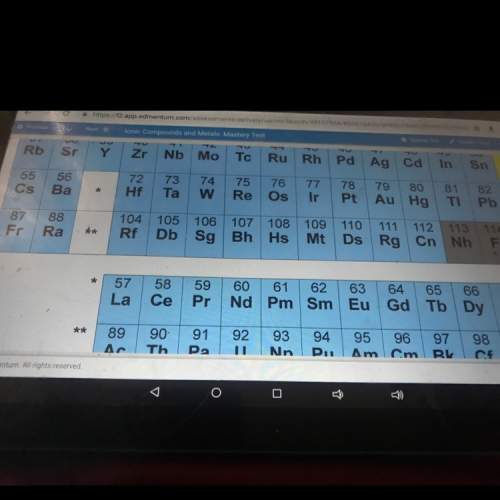
Chemistry, 14.10.2019 15:20 emmasandberg182
Astudent performs the following experiment. step 1: she pours a colorless solution into a beaker that contains another colorless liquid. yellow particles appear in the liquid. step 2: she lets the yellow particles settle in the beaker and then separates the colorless liquid by decantation. what has most likely occurred in the beaker? a chemical change in step 1 and a physical change in step 2 a physical change in step 1 and a chemical change in step 2 chemical changes in both step 1 and step 2 physical changes in both step 1 and step 2

Answers: 1


Another question on Chemistry

Chemistry, 22.06.2019 02:50
Consider the equilibrium system: 2icl(s) ⇄ i2(s) + cl2(g) which of the following changes will increase the total amount of of cl2 that can be produced? all of the listed answers are correct decreasing the volume of the container removing the cl2 as it is formed adding more icl(s) removing some of the i2(s)
Answers: 1

Chemistry, 23.06.2019 00:30
Five different substances are given to you to be dissolved in water. which substances are most likely to undergo dissolution in water? check all that apply. view available hint(s) check all that apply. sodium fluoride, naf octane, c8h18 propanol, ch3ch2ch2oh potassium iodide, ki benzene, c6h6
Answers: 1

Chemistry, 23.06.2019 01:30
The solubility of barium nitrate is 9.02 g/100 g h2o at 20°c. a 15.2 g sample of barium nitrate is added to 200.0 g of water at 20°c. is the solution saturated, unsaturated, or supersaturated? a. unsaturated b. saturated c. supersaturated
Answers: 1

Chemistry, 23.06.2019 02:30
what is your question? collegechemistry 5+3 pts in november 1987, a massive iceberg broke loose from the antartic ice mass and floated free in the ocean. the chunk of ice was estimated to be 98 mi long, 25 mi wide, and 750 ft thick. a typical backyard swimming pool contains about 24,000 gallons of water. how many of these pools could you fill from the water in this iceberg? (assume the iceberg is a rectangular solid of the above dimensions and consists of water only). express answer in scientific notation.
Answers: 3
You know the right answer?
Astudent performs the following experiment. step 1: she pours a colorless solution into a beaker th...
Questions






Mathematics, 14.04.2020 18:11


Mathematics, 14.04.2020 18:11












Mathematics, 14.04.2020 18:12




